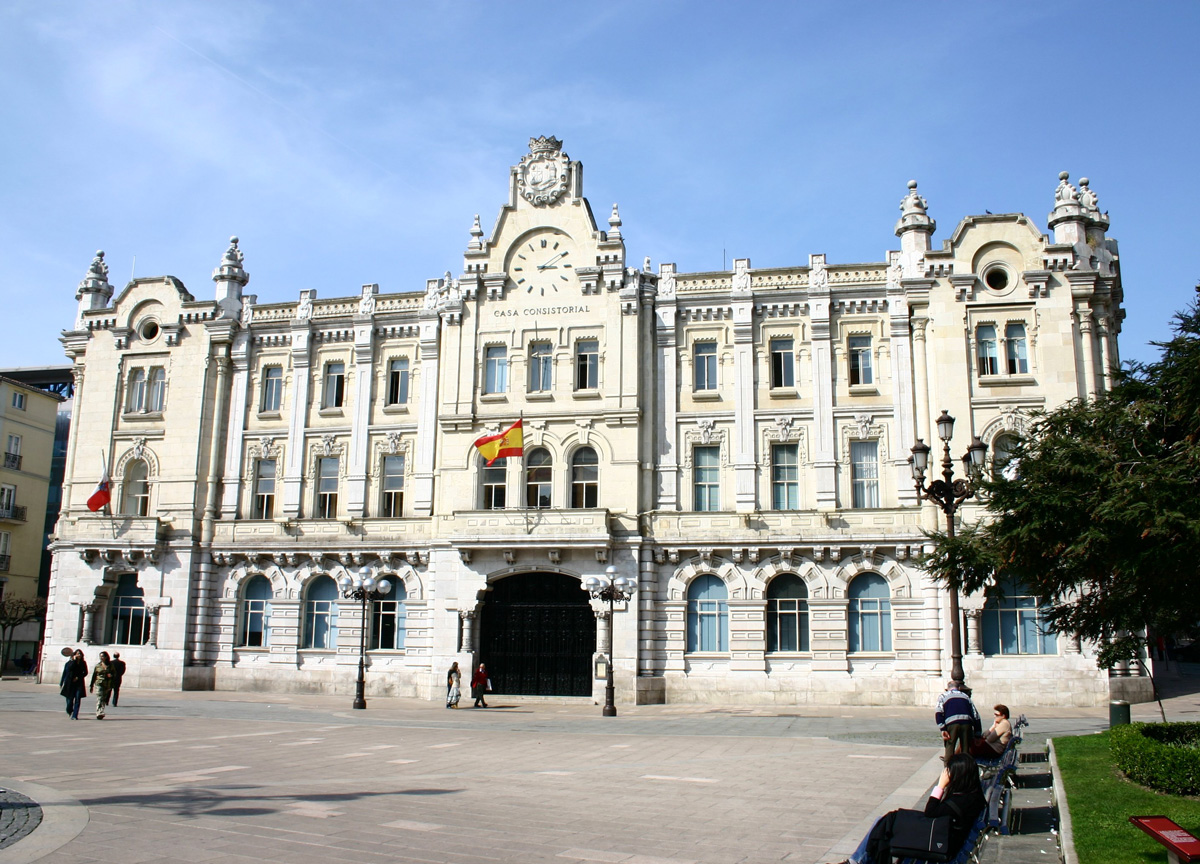About the city: Santander
Santander, the capital city of the autonomous region of Cantabria, is located on the northern coast of Spain, between Asturias and the Basque Country overlooking the Cantabrian Sea. It is a coastal city that grew in 19th century thanks to a flourishing commercial activity and also throughout the 20th century thanks to tourist activity promoted by the Spanish Royal Family. It currently offers a friendly atmosphere within a very beautiful natural setting with large beaches and attractive promenades. All these features make Santander a comfortable city to live in, with a wide range of cultural and sport attractions.
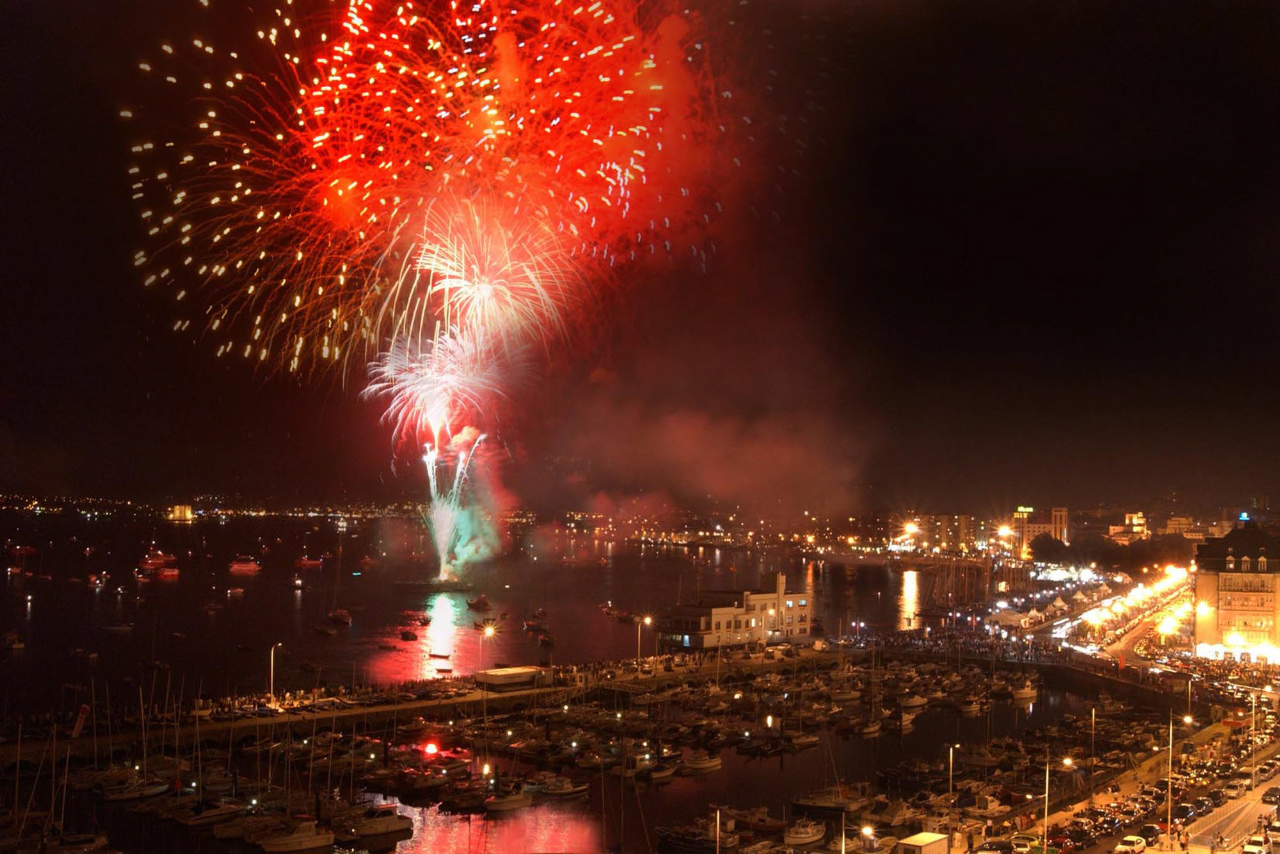 |
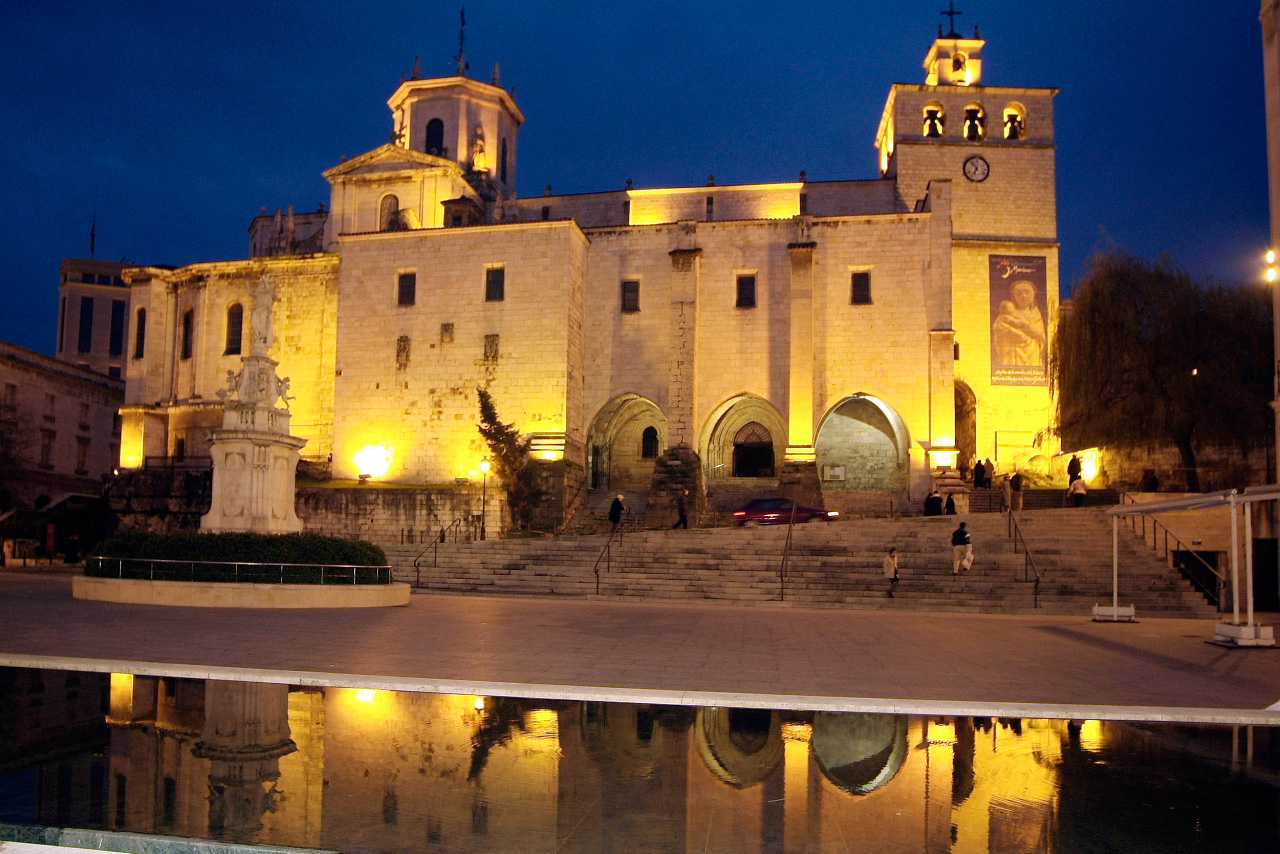 |
Two images of the city of Santander: (left) Summer fireworks at «El Sardinero» beach; (right) the Cathedral.
Santander: City Council.
Santander is a very popular summer destination for tourism. Located in the north coast of Spain, Santander is based around one of the most beautiful bays in the world. This modern city is famous by its sparkling beaches of yellow sand and clean water, the hospitality of its people and the high reputation of its celebrated gastronomy, mostly based on fish and sellfish.
With a population of about two hundred thousand inhabitants, Santander is a very safe city, with a vibrant touristic ambient filled with entertainment and a high quality of life and safety, matching the best standards in the world. There are several beaches and harbours limiting the city on the northern side, towards the southern part you will find the old city centre and a bit further the green mountains. We proudly say that Santander is between the blue and the green.
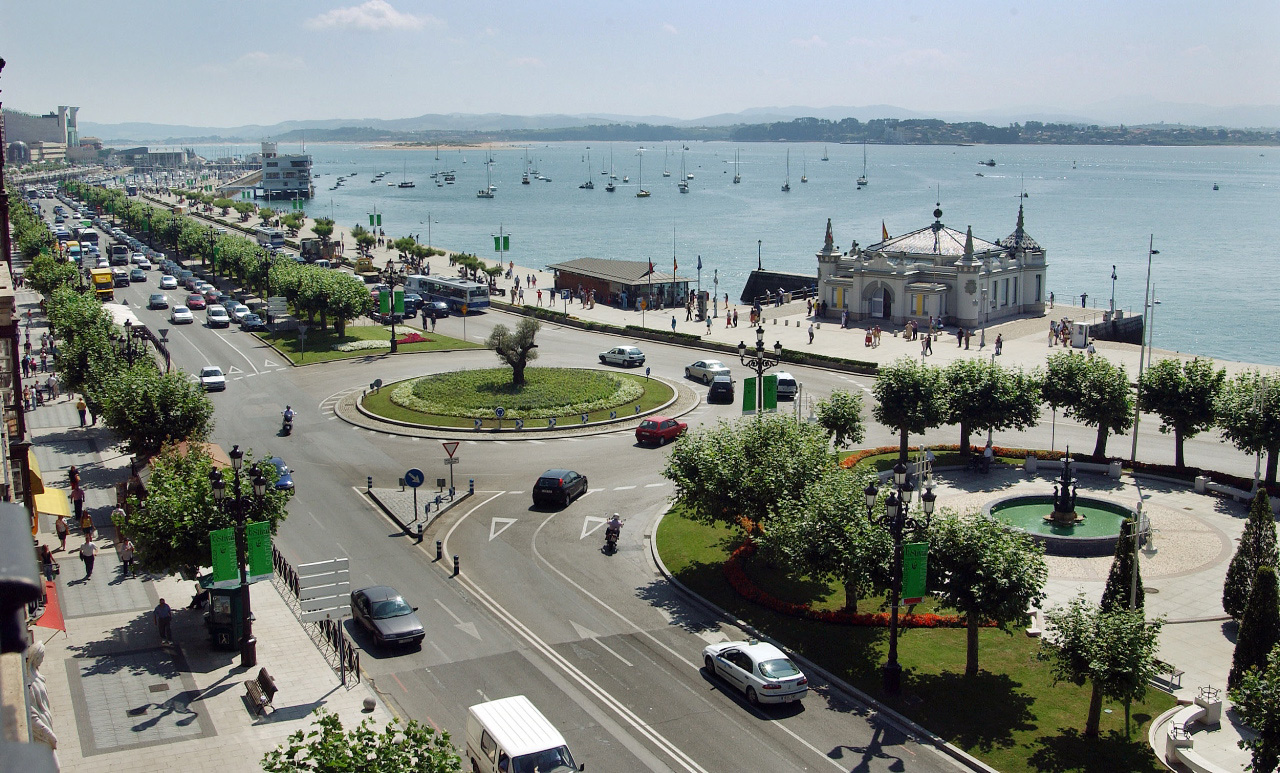 |
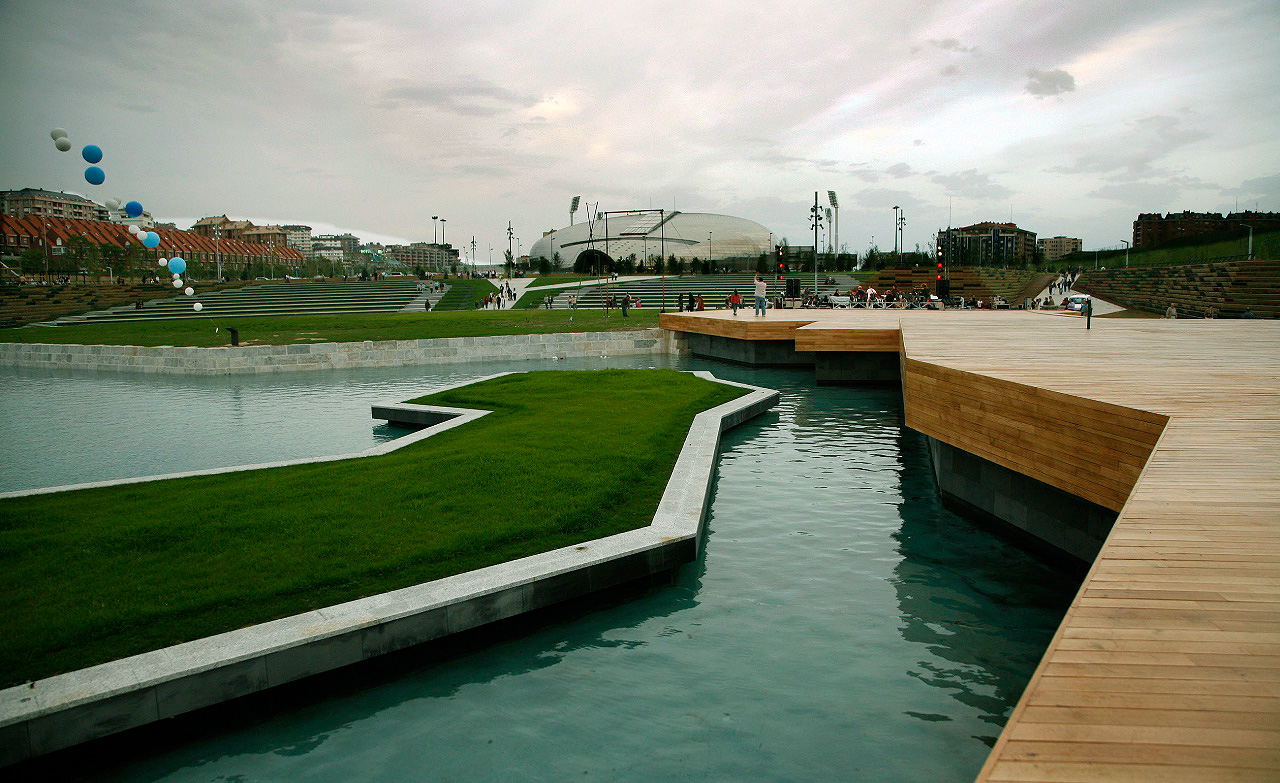 |
Santander: (left) Pereda street; (right) Las Llamas.
In the 19th century the city was a renowned tourist resort for Spanish politicians, aristocrats and for the upper class. The city still keeps wonderful palaces and promenades, a bay type architecture with white buildings, old cafés and its famous casino.
Transport links to the city are good, with train, bus and ferry links, and these three stations are all located in the southwest part of the central district.
Additionally, the whole region of Cantabria has a wide range of opportunities and excursions for exploring the nature, with beautiful mountains, prehistoric sites, sky resorts, beautiful villages and world heritage sites.
Santander is set around a natural port, providing the city with one of the most beautiful bays in the world. The coastal side of the city boasts a long string of top quality beaches and recreational areas, such as the Magdalena Peninsula, the Sardinero and Mataleñas Park.
Outstanding places near Santander in the region of Cantabria are:
– the Altamira caves with prehistoric paintings,
– the natural park and animal reservoir of Cabarceno,
– the charming villages of Santillana del Mar, Comillas with its University or Suances, famous for its beaches.
History
Santander was called Portus Victoriae when the Romans came here in 21 BC, led by Roman emperor Augustus. They had taken over the city in 2 years from Cantabrian tribes. Its present name is derived from Saint Emeterio (Santemter, Santenter, Santander), a martyr whose head was brought there in the 3rd century, along with that of Saint Celedonio, according to legend.
The city owes its existence to the excellent harbour of the Bay of Santander. Santander was an important port for Castile in the later Middle Ages, and also for trade with the New World.
Santander officially became a city in 1755, thanks to the king Ferdinand 6th. In 1833 the Spanish territorial reform gave Cantabria an administrative centre for the first time in its history, and in 1983 the Spanish «province» of Santander became the Autonomous region of Cantabria.
It was a busy port for many years, and became famous when King Alfonso XIII took his summer holidays here in the 1900’s. A palace was built for him on the Peninsula de la Magdalena. Due to this, it quickly became hugely popular amongst locals to visit, and many buildings in the belle époque style were constructed.
Santander was devastated by a great fire in 1941. The fire destroyed the greater part of the medieval town centre and gutted the city’s Romanesque cathedral.
Today, Santander is a charming, modern city with a rich cultural and historic heritage and seaside elegance. One of the most beautiful cities in Spain and a privileged destination for a holiday at the beach.
Some data
- Country: Spain
- Location: Region of Cantabria (north of Spain) / Santander Bay
- Status: city / capital of autonomous community of Cantabria
- Area: approximately 14 square miles / 35 square kilometres
- Population: approximately 190,000
- Language: Spanish
- Currency: Euro (EUR). ATM’s operate all 24 hours.
- Time zone: 1 hour ahead of Greenwich Mean Time (GMT)
- Country dialing code: +34
- Telephone area code: 942
- Average daily Santander January temperature: 13°C / 55°F
- Average daily Santander July temperature: 25°C / 77°F
- Electricity: 220 volts, 50Hz.
Useful links:
More info about Santander: http://www.tourspain.org/santander
See also: http://www.spain.info/en/que-quieres/ciudades-pueblos/otros-destinos/santander.html
What to do in Santander: http://www.tourspain.org/santander/whattodo.asp
